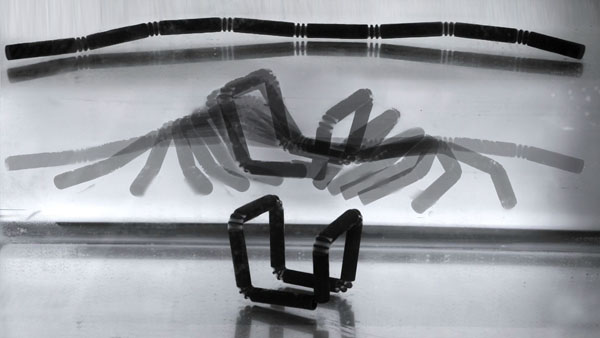Four-dimensional printing - the materials themselves are collected in the shape you need

While most of the world is gradually becoming familiar with 3D printing and its products never cease to amaze us, scientists from the Massachusetts Institute of Technology (MIT) are already developing the technology of four-dimensional printing. The project manager is Skylar Tibbits, a teacher at the MIT architecture department who founded the Self-Assembly laboratory with him.
The lab considers time as the fourth dimension and Tibbitts projects are designed to respond to energy and temporary changes. Developers say that a 4D printer does not print a specific image, but a kind of “chain” of many materials. By
')
So far, scientists have presented only the most simple objects, such as a cube or capital letters MIT. But Skylar Tibbitts hopes that this is only the beginning and the technology of self-assembly will find application in various fields of science and technology. Among the areas of application may be construction and aerospace and furniture production. Imagine that there are unfavorable conditions in which the construction of the object is difficult due to many factors or an orbital station, where the possibilities are even more limited. And here self-assembling objects that form the desired structure under the influence of certain conditions can come to the rescue.
In order for an object to take a programmed form, it is necessary to “teach” the joints to bend at given angles when exposed to environmental conditions that trigger the process of self-assembly.
Tibbitts calls this discovery a fundamental shift in the design and creation of adaptable things that can "think" on their own. For understanding, imagine robots without engines and wires.
[ BBC ]
Source: https://habr.com/ru/post/171211/
All Articles